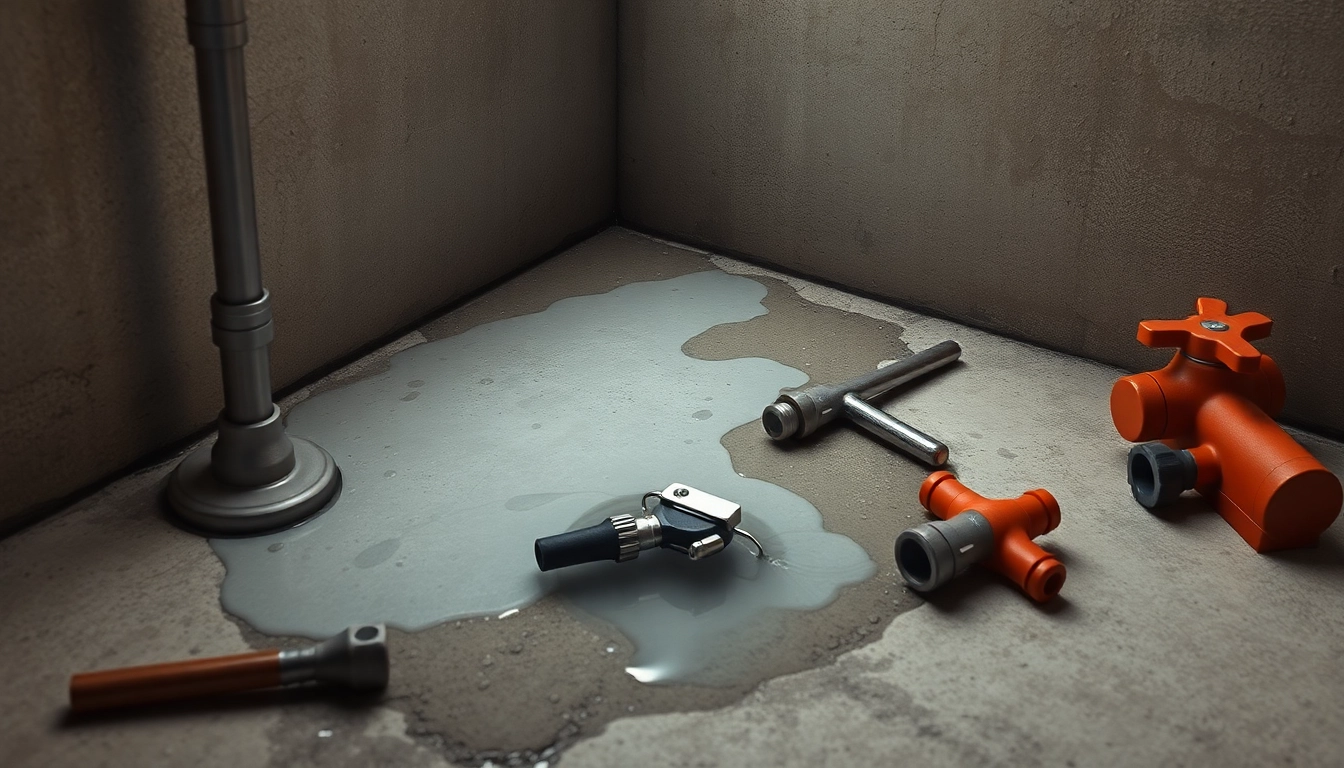Understanding Slab Leakage
What is Slab Leakage?
A slab leak refers to a plumbing issue involving what is slab leakage, specifically a leak in the water lines that are embedded within the concrete foundation of a home. These pipes, often made of copper, can develop leaks due to various factors such as corrosion, ground shifting, or poor plumbing practices. A slab leak can be a silent problem, as the leaking water typically goes unnoticed until it has caused significant damage to the property. Understanding slab leaks is crucial for homeowners, as early detection can save thousands in repairs.
How Does it Affect Your Home?
Slab leaks can lead to severe structural and financial consequences if left unaddressed. The presence of water under the concrete can cause mold growth, increase your water bill, and even compromise the integrity of the foundation itself. Common effects include:
- Foundation Damage: Prolonged exposure to water can erode the concrete, leading to cracks and instability.
- Mold and Mildew Growth: Moist environments are breeding grounds for mold, which can pose health risks to residents.
- Increased Utility Costs: A substantial leak can spike your water bills significantly, indicating an underlying issue.
- Flooring Damage: Water can seep through the floors, damaging tiles, wood, and other flooring materials.
Common Causes of Slab Leakage
Understanding the causes behind slab leaks is essential for prevention and effective management. Here are some common causes:
- Corrosion: Copper pipes can corrode over time due to chemical reactions with soil, leading to leaks.
- Poor Installation: If pipes are not installed correctly, they may be more susceptible to damage.
- Ground Shifting: Natural soil expansion and contraction can put pressure on underground pipes.
- Tree Roots: Roots may infiltrate water lines, causing them to crack or break.
- High Water Pressure: Excessively high pressure can lead to stress on the pipes, increasing the risk of leaks.
Identifying Symptoms of Slab Leakage
Visual Signs of a Slab Leak
Being aware of visual cues is key to identifying slab leaks early. Common visual indicators include:
- Puddles of water on the floor that don’t seem to have an immediate source.
- Wet spots in the yard, especially if they persist after heavy rains.
- Cracked walls or flooring, indicating potential shifts due to water damage.
Auditory Indicators
Sometimes, slab leaks can be detected by sound. Listen for:
- Unusual sounds of running water, particularly when all faucets are turned off.
- Gurgling noises from drains, which may indicate air trapped due to slow drainage.
Changes in Water Bills
An uptick in your monthly water bill can be a red flag for a slab leak. Compare current bills with previous months; unusually high consumption may point to a hidden leak.
Detection Methods
Professional Leak Detection Services
When it comes to identifying slab leaks, hiring professionals can save you time and damage. These experts utilize advanced techniques such as:
- Acoustic Sensors: Used to detect the sound of water leaking from pipes.
- Infrared Cameras: These can visualize temperature differences caused by moisture.
- Pressure Testing: Assessing the water pressure in pipes can reveal leaks.
DIY Techniques for Homeowners
For those looking to tackle potential leaks without professional help, several DIY methods can be employed:
- Monitor Water Usage: Keep track of daily water usage to spot any irregularities.
- Visual Inspections: Regularly check areas where piping is exposed for any signs of moisture or corrosion.
- Listen for Hissing Sounds: Unusual sounds while using fixtures may indicate leaks.
Using Technology to Detect Leaks
Today’s technology allows homeowners to utilize various leak detection devices:
- Smart water meters can alert you to unusual spikes in water usage.
- Leak detection devices can be installed in areas of high risk.
Repairing Slab Leakage
Traditional Repair Methods
For most slab leaks, repairing the damage can be a complex task. Traditional methods include:
- Slab Jacking: This method lifts and stabilizes the foundation using hydraulic pressure.
- Repiping: Replacing damaged sections of piping involves cutting through the concrete and replacing the pipes.
Trenchless Repair Technology
Trenchless technology offers a less invasive approach to repairing slab leaks. This involves:
- Pipe Lining: A new, resin-coated pipe is inserted into the existing damaged pipe.
- Pipe Bursting: The old pipe is fractured and pushed out while a new pipe is pulled in.
Cost Estimates for Repairing Slab Leaks
The cost of repairing a slab leak can vary significantly depending on various factors, including the leak’s size and accessibility. Generally, homeowners can expect to pay between $630 to $4,400 to repair a slab leak, with most repairs averaging around $2,280. It’s advisable to get multiple estimates to find the best approach that fits your budget.
Preventing Slab Leakage
Regular Maintenance Tips
Preventing slab leaks begins with regular home maintenance. Here are effective strategies to consider:
- Inspect Pipes Regularly: Routine checks can help identify signs of wear or corrosion before they lead to leaks.
- Keep Gutters Clean and Functional: Proper drainage can prevent excess water from eroding your foundation.
- Monitor Soil Moisture Levels: Avoid overwatering your garden, as saturation can lead to shifted soil.
Improving Drainage Systems
Enhancing your home’s drainage can significantly reduce the risk of slab leaks. Consider improvements such as:
- Installing drainage systems that divert water away from the foundation.
- Ensuring that downspouts direct water at least five feet away from the foundation.
- Creating grading that slopes away from the home to avoid water pooling around the foundation.
Choosing the Right Plumbing Materials
Investing in quality plumbing materials can greatly reduce the likelihood of slab leaks. Look for:
- PVC piping for drainage systems as it is less prone to corrosion.
- Copper pipes coated with anti-corrosive material for longevity.
